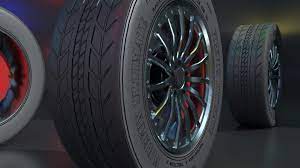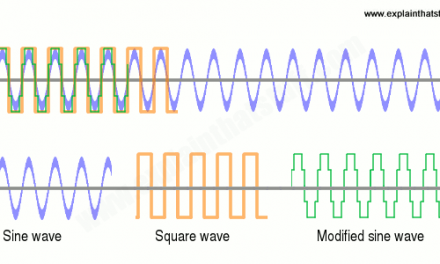WHAT IS AN ALLOY?
A metal alloy is a substance that combines more than one metal or mixes a metal with other non-metallic elements.
For example, brass is an alloy of two metals: copper and zinc. Steel is an alloy of a metallic element (iron) and a small amount — up to 2% — of a non-metallic element (carbon).
Alloys are an example of “teamwork makes the dream work,” since each substance within the alloy lends its own properties to the solution or mixture. Some alloys will take the best attributes of each contributing element and create a final product that is harder, more durable, and/or more resistant to corrosion.
The careful chemistry that goes into creating these precise ratios ultimately produces substances with unique, useful properties.
HOW ARE ALLOYS MADE? HOW DO ALLOYS WORK?
Digging a bit deeper into alloy chemistry demonstrates why alloys are so useful in such a wide variety of industries.
Because alloys combine different elements, they contain atoms of different sizes. How these atoms combine and interact with one another gives alloys their classification. In alloy chemistry, an alloy can be classified as substitutional or interstitial, according to its atomic arrangement.
SUBSTITUTIONAL ALLOYS
A substitutional alloy is formed from atom exchange mechanisms. The metallic components have similar atomic radii and chemical-bonding capabilities, so the atoms from one metal can occupy the same sites as their counterpart in the atomic metal lattice. Well-known substitutional alloys include brass and bronze.
INTERSTITIAL ALLOYS
An interstitial alloy is formed when smaller atoms from one element fill the holes of the metal lattice. The atoms from each element do not occupy the same sites. Steel is an example of an interstitial alloy. In the case of steel, the smaller carbon atoms fill in spaces between iron atoms.
Chemistry is fascinating, but we’ll get to the point: in both instances, the atoms in the alloy are unable to slide over each other as easily as those in a pure metal, meaning that the alloy is stronger and harder than either of the pure metals used to create it. Think of it like velcro: if you only have one side of the velcro, it won’t stick to itself as firmly as the contrasting loops and hooks will grip together.
WHY ARE METAL ALLOYS USEFUL?
Photo of Cold Rolled Steel in warehousePure metals are rarely used in manufacturing as they are too malleable, or soft. But as we demonstrated above, alloying a metal often enhances its properties. Some alloys are created to have better resistance to corrosion or better conductivity, and some are created to significantly increase their load-bearing capabilities.
The physical properties of an alloy — such as conductivity, reactivity, and density — may not differ significantly from its constituent elements. However, the engineering properties of an alloy — such as shear strength and tensile strength — may be substantially different.
Because of this, metal alloys are in high demand in a variety of applications and industries such as manufacturing, electronics, domestic goods, architecture, plumbing, and the automotive and aerospace industries.
EXAMPLES OF POPULAR ALLOYS AND THEIR USES:
BRASS
Brass is an alloy of copper and zinc. Brass has a low melting point and is extremely workable and durable. It is used in applications where low friction and resistance to corrosion is required such as:
- Locks
- Bearings
- Ammunition components
- Appliance parts
- Decoration
PHOSPHOR BRONZE
Phosphor bronze is composed of copper alloyed with 0.5-11% tin and 0.01% phosphorus. It is resistant to corrosion and fatigue and should be used in:
- Welding rods
- Bushings
- Bearings
- Springs
- Switch parts
- Ship propellers and other applications in the marine environment
STEEL
Steel is an alloy of iron and carbon. It has a high tensile strength and low cost. Mead Metals stocks many classifications of steel such as stainless steel, annealed and tempered spring steel and cold rolled steel. It is often used in:
- Automotive parts
- Infrastructure
- Construction
- Household products
- Kitchen appliances
BERYLLIUM COPPER
Also known as Alloy 25 or BeCu, beryllium copper is a copper alloy with 0.5%-3% beryllium. It is weldable, ductile, and has non-magnetic and non-sparking qualities. It is resistant to oxidation, corrosion, and non-oxidizing acids. Additionally, beryllium copper has excellent thermal and electrical conducting capabilities. It is often used in:
- Electronic connector contacts
- Small springs
- Musical instruments
- Computer components
- Tools for hazardous environments such as aerospace engineering and metalworking
ARE METAL ALLOYS EXPENSIVE?
A popular misconception is that metal alloys are expensive due to the multiple stages necessary for their production. However many metal alloys, such as brass and bronze, have been used for such a long time that the alloy can often be obtained for a lower price than those of the constituent pure metals.
Production methods
Forging
Forging can be done by a one or multi-step process forging from various magnesium alloys, most commonly AZ80, ZK60 (MA14 in Russia). Wheels produced by this method are usually of higher toughness and ductility than aluminium wheels, although the costs are much higher.

Coal forge diagram
Forging is a complicated process that involves such processes, as heating, rolling, applying high pressure, hammering and/or combination of these. As a result, the crystal structure of the alloy changes, and as a result the material becomes stronger and more lightweight.
Assembly
There are one- two- and three-piece forged wheels. Every piece is originally an alloy billet, which is further transformed into a wheel, in cases of one-piece forged wheels, or into a wheel part in cases of multi-piece wheels.
High pressure die casting
This process uses a die arranged in a large machine that has high closing force to clamp the die closed. The molten magnesium is poured into a filler tube called a shot sleeve.

high pressure die casting
A piston pushes the metal into the die with high speed and pressure, the magnesium solidifies and the die is opened and the wheel is released. Wheels produced by this method can offer reductions in price and improvements in corrosion resistance but they are less ductile and of lower strength due to the nature of high pressure die casting.
Low pressure die casting
This process usually employs a steel die, it is arranged above the crucible filled with molten magnesium. Most commonly the crucible is sealed against the die and pressurized air/cover gas mix is used to force the molten metal up a straw-like filler tube into the die.
When processed using best practice methods, low pressure die casting wheels can offer improvements in ductility over magnesium wheels and any cast aluminium wheels, they remain less ductile than forged magnesium.
Gravity casting
Gravity-cast magnesium wheels have been in production since the early 1920s and provide good ductility, and relative properties above what can be made with aluminium casting. Tooling costs for gravity-cast wheels are among the cheapest of any process. This has allowed small batch production, flexibility in design and short development time.

gravity die casting
Reference










